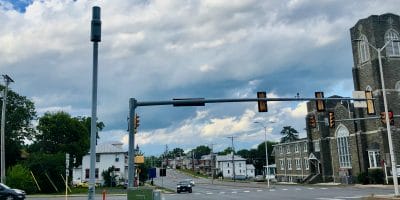A Four Part Series by C. David Pruett

PART I: Poisoning the Noosphere
In 1875, the Austrian geologist Eduard Suess coined the term “biosphere” to define the narrow zone on Earth containing life. The biosphere is concentric to and surrounds the physical Earth, the “geosphere.”
A few decades later, a similar new concept, the “noosphere,” emerged, proposed independently by the Russian biogeochemist Vladimir Vernadsky and the French paleontologist-priest Teilhard de Chardin. Teilhard envisioned the noosphere as another concentric shell, this one surrounding the biosphere and containing the collective consciousness of the Earth’s human inhabitants. The stuff of sci-fi.
Fast forward to 1989 when the British computer scientist Tim Berners-Lee wrote the Hypertext Transfer Protocol (http) that launched the World Wide Web. In many aspects, the Web is the physical embodiment of Teilhard’s noosphere, for potentially it links all human minds on our planet, granting fingertip access to the totality of human knowledge.
Thirty years later, we take the World Wide Web for granted. As difficult as the pandemic has been, it’s been bearable because of the Web, through which families and friends remain in touch, workers telecommute, and students attend online classes. We may not be able to hug our loved ones, but at least we can see and hear them.
By linking the world together and fostering equal access to information, the Internet’s potential for democratization and human benefit is extraordinary.
What almost no one anticipated is the flip side: the Internet’s potential for harm.
Social media is linked to soaring rates of anxiety, depression, and self-harm among pre-teens and adolescents. Alternative sets of “facts,” tailored to each individual’s online vulnerabilities, drive today’s extreme political polarization, with its demonization of the other side. The lack of a common ground of truth destabilizes democracies and enables authoritarian regimes, on the rise around the world.
James Madison held that information and education are dual cornerstones of a democracy:
Knowledge will forever govern ignorance, and a people who mean to be their own governors, must arm themselves with the power knowledge gives. A popular government without popular information or the means of acquiring it, is but a prologue to a farce or a tragedy or perhaps both.
Bluntly put, without a core of shared truth, democracy is doomed.
For this reason, the Founding Fathers further recognized the crucial role of the “fourth estate”—the media—the unofficial fourth branch of government. During the American Revolution, newspapers kept the rebellious public informed. Ever since the Revolution, they’ve held successive governments accountable.
Good journalists—who research, verify, decipher, and explain what is going on behind the scenes—are invaluable and indispensable. Think of CBS’ Edward R. Murrow, whose reporting in the McCarthy Era of the 1950s exposed the excesses of the “Red Scare” witch-hunts. Or thank the Washington Post for its expose in 1971 of the FBI’s covert and illegal COINTELPRO (COunter INTELligence PROgram), which surveilled, infiltrated, harassed, and disrupted—sometimes by assassination—several social movements, including the Civil Rights movement, the anti-Vietnam War movement, and the American Indian Movement (AIM).
Like the media or not, journalists are not “enemies of the people” but servants. And throughout most of our history, the media have been the principal arbiters of truth.
But no longer.
Today, anyone can post anything—true, false, or misleading—on the Internet, and that post becomes gospel for someone somewhere. A personal case in point: In 2007 the International Panel on Climate Change (IPCC) released its fourth climate assessment (AR4), summarizing the findings and conclusions of hundreds of climate scientists amassed during a six-year study. A few days later, the former editor of my community’s newspaper “refuted” AR4 in his daily column. His “authoritative” source? The contrarian website of a sixteen-year-old high-school student.
The lack of an accepted core of truth explains why we are at such loggerheads. First, in the digital age, each person arbitrates their own truth. Second, money—not truth—drives much of today’s media. As a result, half of Americans believe fake news to be real and real news to be fake. In which half am I? Are you?
Are we simply a nation of the gullible, or is something poisoning the noosphere? For years I believed it was the former, and that reason would ultimately prevail. Now I’m not so sure. There’s mischief afoot. We’ll reveal that mischief in Part II: The Social Dilemma.
Dave Pruett is Professor Emeritus of Mathematics at James Madison University (JMU). In addition to three decades of mathematics teaching at various levels, he has worked for a decade in NASA-related aerospace research. Dave is also the author of Reason and Wonder (Praeger, 2012), the outgrowth of an award-winning JMU Honors seminar that explores the nexus of science and spirituality and was the subject of a JMU TEDx talk in 2018.
An earlier version of this article ran in Like the Dew (https://likethedew.com).












